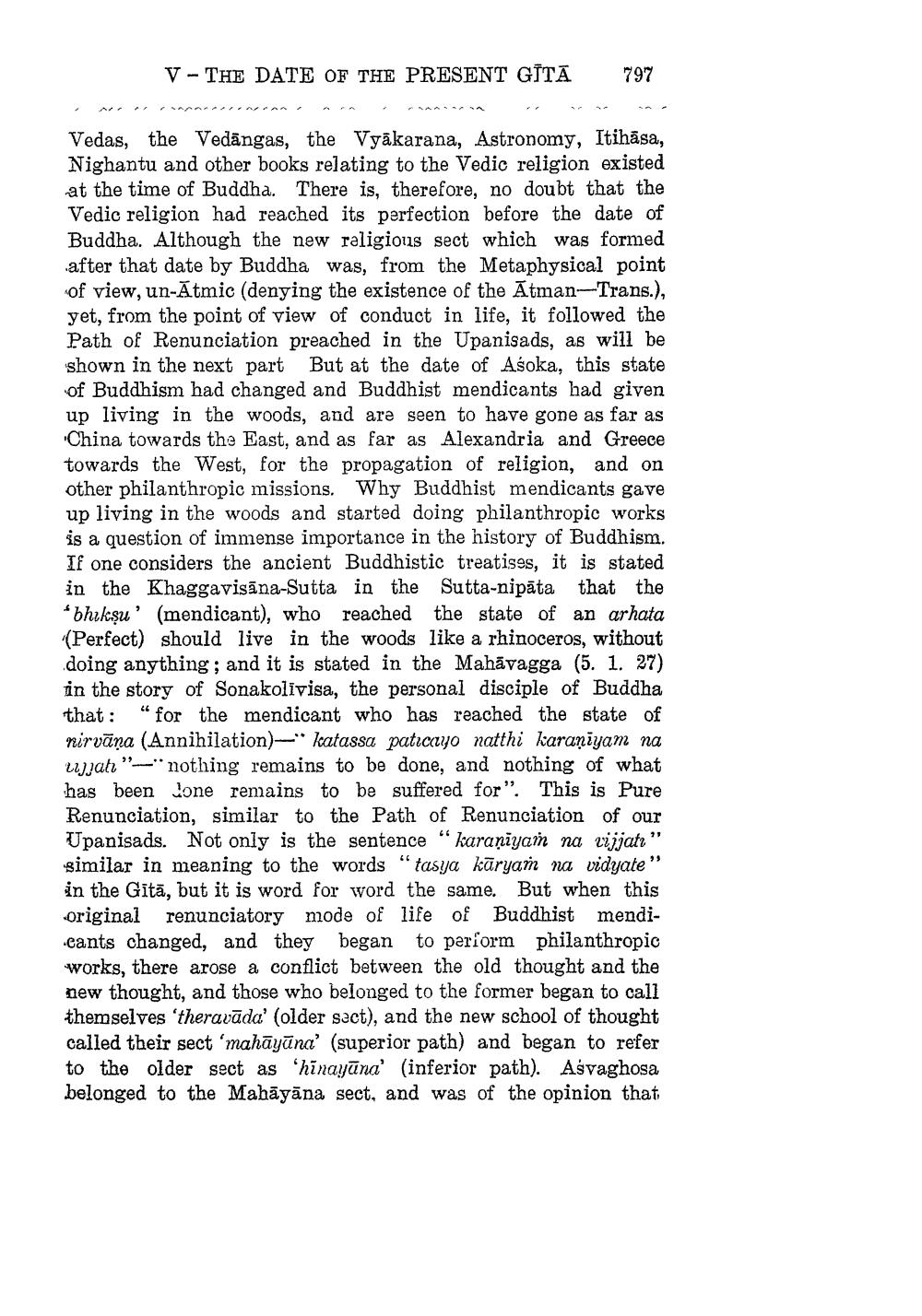________________
V-THE DATE OF THE PRESENT GĪTĀ 797
Vedas, the Vedangas, the Vyakarana, Astronomy, Itihasa, Nighantu and other books relating to the Vedic religion existed at the time of Buddha. There is, therefore, no doubt that the Vedic religion had reached its perfection before the date of Buddha. Although the new religious sect which was formed after that date by Buddha was, from the Metaphysical point of view, un-Atmic (denying the existence of the Atman-Trans.), yet, from the point of view of conduct in life, it followed the Path of Renunciation preached in the Upanisads, as will be shown in the next part But at the date of Asoka, this state of Buddhism had changed and Buddhist mendicants had given up living in the woods, and are seen to have gone as far as China towards the East, and as far as Alexandria and Greece towards the West, for the propagation of religion, and on other philanthropic missions. Why Buddhist mendicants gave up living in the woods and started doing philanthropic works is a question of immense importance in the history of Buddhism. If one considers the ancient Buddhistic treatises, it is stated in the Khaggavisana-Sutta in the Sutta-nipata that the bhikṣu (mendicant), who reached the state of an arhata (Perfect) should live in the woods like a rhinoceros, without doing anything; and it is stated in the Mahavagga (5. 1. 27) in the story of Sonakolivisa, the personal disciple of Buddha that: "for the mendicant who has reached the state of nirvana (Annihilation)-katassa paticayo natthi karaniyam na
jjah "nothing remains to be done, and nothing of what has been done remains to be suffered for". This is Pure Renunciation, similar to the Path of Renunciation of our Upanisads. Not only is the sentence "karaniyam na vijjatı" similar in meaning to the words "tasya karyam na vidyate in the Gita, but it is word for word the same. But when this original renunciatory mode of life of Buddhist mendicants changed, and they began to perform philanthropic works, there arose a conflict between the old thought and the new thought, and those who belonged to the former began to call themselves 'theravada' (older sect), and the new school of thought called their sect 'mahāyāna' (superior path) and began to refer to the older sect as 'hinayana' (inferior path). Asvaghosa belonged to the Mahāyāna sect, and was of the opinion that
55




